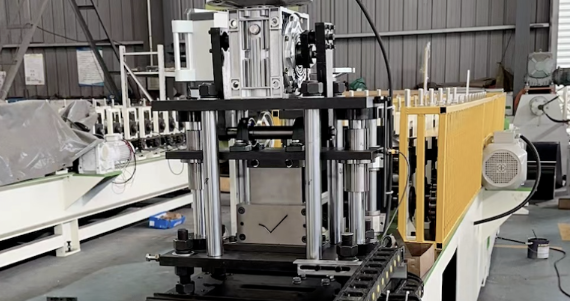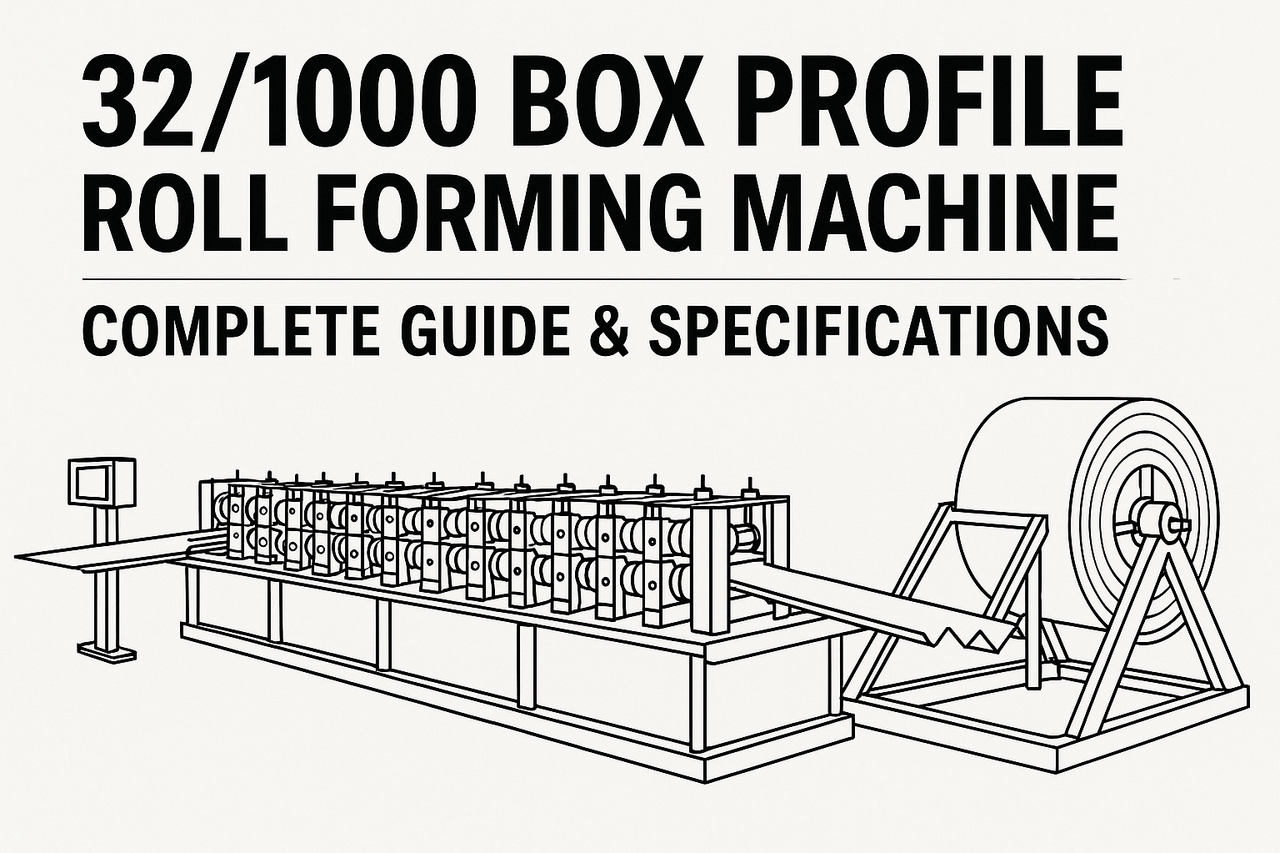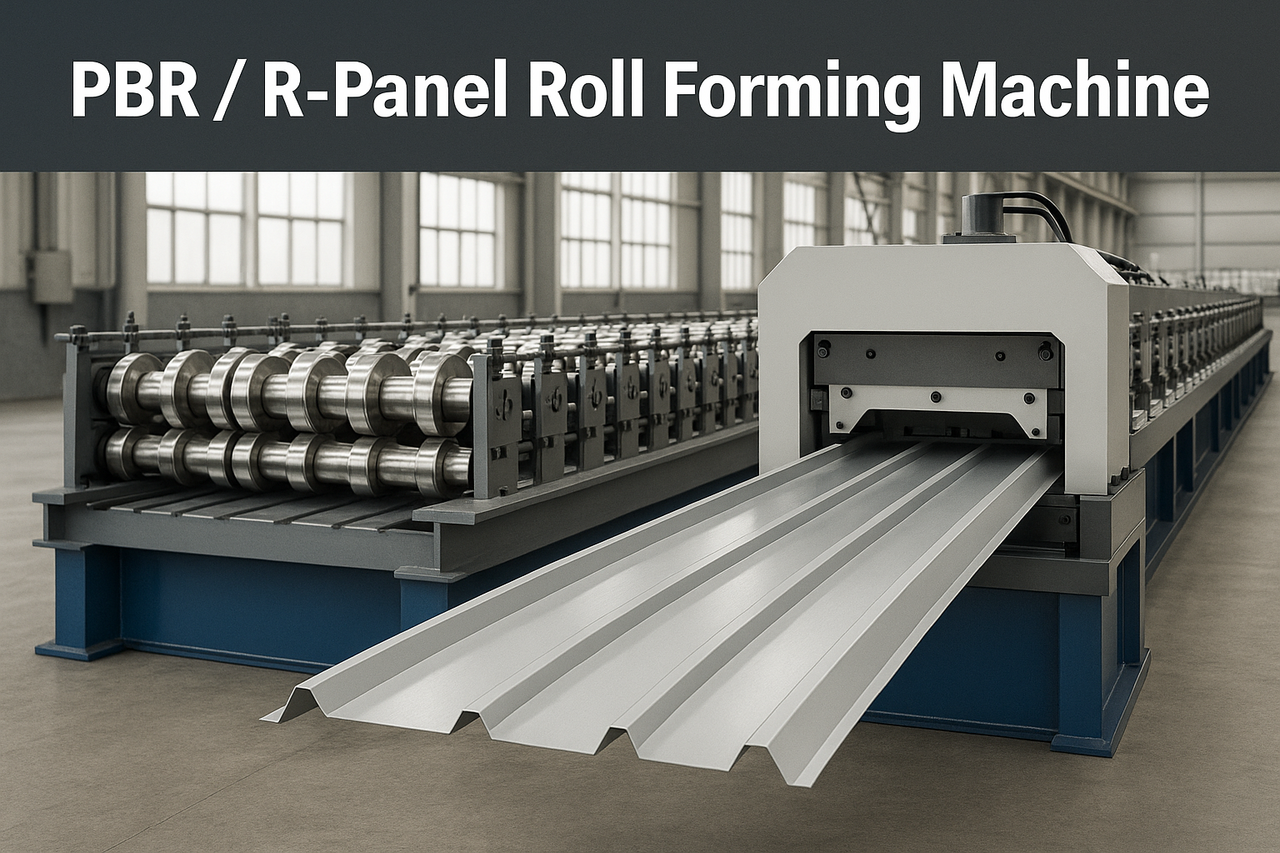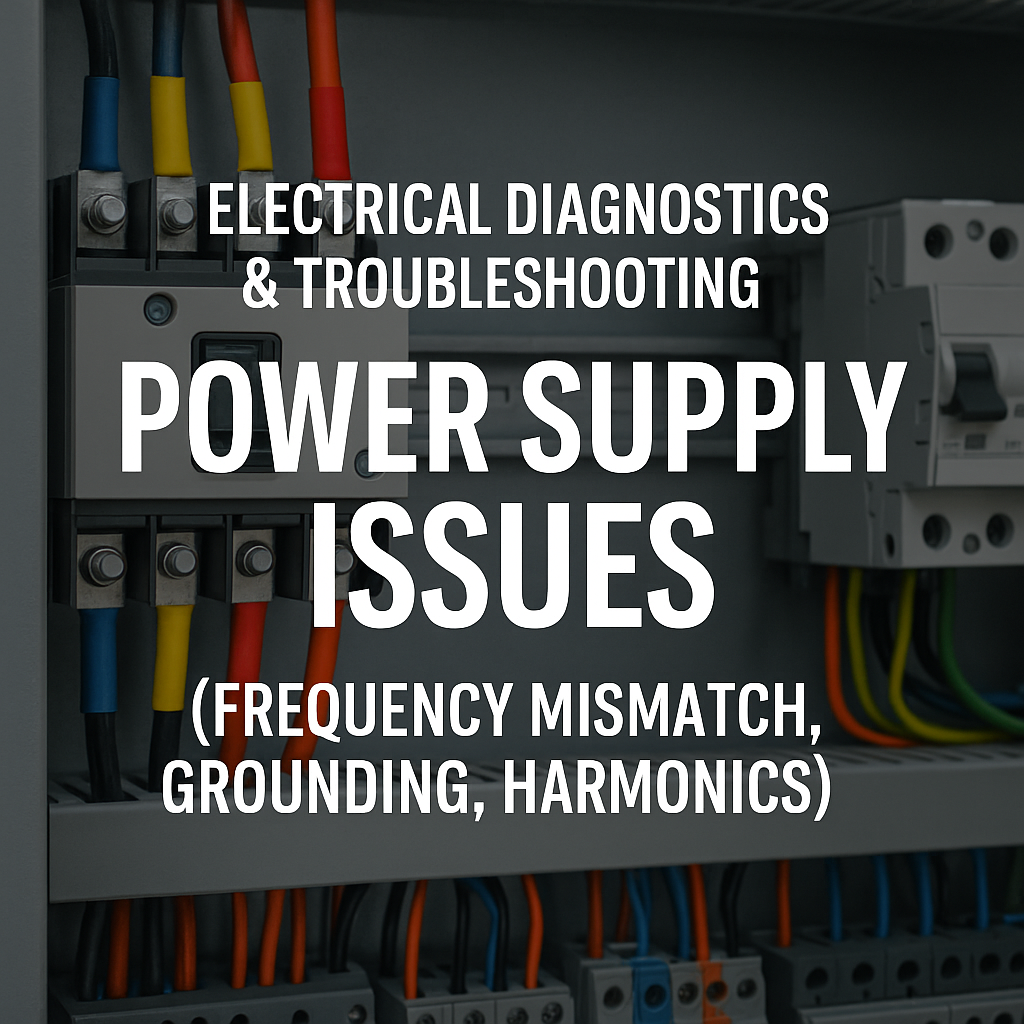A hemmed drip edge roll forming machine is specifically designed to produce high-quality drip edge profiles used in roofing systems to ensure water runoff and protect underlying structures. Known for its precision, durability, and efficiency, this machine caters to diverse industries, including construction, roofing, and architectural projects. It provides seamless operations and precise profile dimensions for large-scale production needs.
Machine Specifications
- Roller Materials: High-grade chromium-coated steel rollers for enhanced durability and rust resistance.
- Punching and Notching: Advanced hydraulic punching and notching system for precise customization of profiles.
- Servo Motors: High-performance servo motors for controlled and efficient operations.
- Hydraulic Cutting Systems: Accurate hydraulic cutting with minimal waste, ensuring clean and smooth cuts.
- Frame Size: Robust steel frame designed to minimize vibrations and withstand high-speed operations.
- Motors and PLC System: Energy-efficient motors integrated with a user-friendly PLC system for seamless programming and monitoring.
- Machine Speed: Up to 40 meters per minute, depending on the profile complexity.
- Safety Guards and Enclosures: Comprehensive safety features including guards and enclosures to protect operators during operations.
Profile Description
- Materials: Typically manufactured using galvanized steel, aluminum, or stainless steel.
- Sizes: Available in a variety of standard and customizable sizes based on customer requirements.
- Material Gauge: Supports gauges from 0.3mm to 1.0mm for versatile applications.
- Market Size: Increasing demand for drip edge profiles in roofing and construction industries worldwide.
- Industries: Construction, roofing manufacturers, and architectural design firms.
- Popular Countries: The machine is most popular in the United States, Canada, and Australia due to high construction activity and adherence to roofing standards.
Extras
- Stackers: Automatic stacking systems to improve workflow efficiency.
- Remote PLC Systems: For remote monitoring and control.
- Coil Car Tippers: For easy handling and feeding of metal coils.
- Uncoilers and Recoilers: Essential for smooth coil management during operations.
- Automatic Stackers: For consistent stacking of finished profiles.
- Leveling System: Ensures precision in material feeding and profile formation.
- Coil Handling Systems: Comprehensive solutions for loading and managing coils.
Machine Pricing
- Low-Range: Basic models starting at $40,000 for small-scale operations.
- Mid-Range: Advanced models priced around $60,000–$80,000 with additional features.
- High-Range: Fully automated systems exceeding $120,000, suitable for industrial-scale production.
Setup and Installation
- Step 1: Prepare the installation site with proper flooring and space.
- Step 2: Unpack and position the machine securely.
- Step 3: Connect the power supply and ensure compatibility with local electrical standards.
- Step 4: Calibrate the rollers and feeding system to match desired profile dimensions.
- Step 5: Test the machine with trial runs before initiating full-scale production.
Maintenance
- Regular lubrication of rollers and moving parts.
- Periodic inspection of the hydraulic system and motor performance.
- Cleaning and removal of debris to prevent clogging.
- Updating the PLC system for enhanced functionality.
Questions and Answers
- What materials can be used with this machine?
- Galvanized steel, aluminum, and stainless steel.
- Is the machine compatible with different power supplies?
- Yes, the machine can be configured for various power supplies based on the country.
- How long does it take to set up the machine?
- Standard setup typically takes 1-2 days with professional assistance.
- What industries benefit most from this machine?
- Construction, roofing, and architectural design industries.
- Can the machine produce custom-sized profiles?
- Yes, it is equipped to handle custom dimensions as per client requirements.



